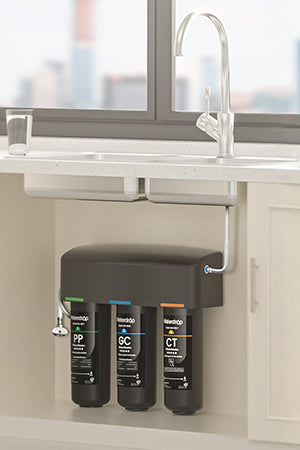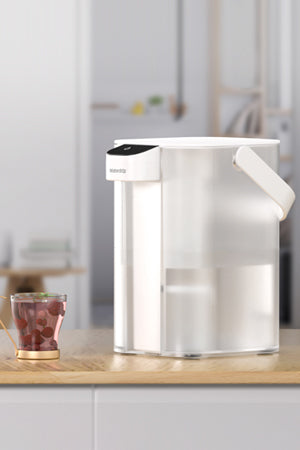The truth is that tap water is something which we tend to take for granted. We simply turn on the tap and drink it without really worrying much about the content. However, of late, there has been a growing concern that microplastics have been found in tap water – something which could have very serious repercussions for our health.
Increasingly, microplastics have been detected in global water sources. These include tap water. But what actually are microplastics? How do microplastics get into your water supply? And finally, why should you actually care?
What Are Microplastics?
Microplastics can be defined as tiny pieces of plastic that are usually
smaller than 5 millimeters and may not be visible to the naked eye. It may come from various sources that may be man-made as well as natural.
In some cases, microplastics may be produced on purpose, such as in personal care products. In other cases, it may come from the degradation of bigger plastics such as bottles, bags, or fishing nets.
Primary Microplastics
These plastics have been designed to be produced on a very small scale. These include microbeads found in exfoliating scrubs and plastic pellets. Primary microplastics come from industrial processes.
Secondary Microplastics
These microplastics form as a result of the degradation of larger plastics as a result of exposure to environmental factors like UV light. These plastics come from sources such as plastic bottles and food packaging.
Both forms of microplastics have been found to be widespread within our environment. They also appear in water sources globally.
Where Do Microplastics in Tap Water Come From?
Microplastics may find their way into tap water through several sources. These microplastics may originate from the pollution of rivers, lakes, and oceans. The microplastics may also originate from industrial activities. The following are some of the sources that may lead to
microplastics finding their way into water sources :
1. Water Treatment Plants
Although water treatment plants in Singapore remove large debris from water very effectively, they may not always have the capacity to remove microplastics. Microplastics may be very small and hence may pass through the filters that remove large debris from water. As a result, microplastics may be found in tap water.
2. Urban Runoff
The rainfall runoff from urban areas may also contain microplastics from streets, roads, and construction sites that may flow into water bodies, eventually finding their way into the drinking water. This is especially true where plastic waste is not disposed of properly or in places where there are high uses of plastics.
3. Agricultural Runoff
Microplastics emerge from agriculture. Some fertilizers and pesticides contain microplastics in the form of microbeads. These microbeads often flow into water sources during rainstorms. These add to water contamination.
4. Household Sources
In the home, commonly used items such as artificial fibers in clothes that release microfibers when washed and personal care items like toothpaste may add microplastics to your water. The microplastics can get flushed into the wastewater system and end up in local water sources.
Why Should You Care About Microplastics Found in Water?
The increase in microplastics found in drinking water is becoming a problem since microplastics may have important impacts on human health as well as environmental implications. Although most of the information on microplastics in water is still being investigated by scientists, here are some important factors that ought to compel you to become concerned about microplastics found in tap water.
1. Health Risks
Despite the need for more research to determine the full effects of microplastics on human health, it appears that the ingestion of microplastics in water may be detrimental. The microplastics may potentially induce inflammation or toxicity within the body as a result of ingestion.
In addition to that,
microplastics may contain toxic substances such as persistent organic pollutants that may attach to the surface of the microplastics. These toxic substances may be ingested by the human body as a result of consuming microplastics.
2. Environmental Impact
Microplastics may affect both human life and marine organisms. For marine organisms like plankton and fish, microplastics may be ingested as food. If microplastics harm marine organisms, there may be internal injuries, reproduction complications, and death. When moving higher up in the food chain, it is now possible that microplastics may affect human life as a result of consuming marine organisms that have eaten microplastics.
3. Water Quality
The presence of microplastics may decrease the overall quality of your drinking water. Although the water may still be considered safe for drinking purposes, it may negatively influence the taste and clarity of your drinking water due to the microplastics. This may result in dissatisfaction on the part of the consumer and an increased focus on the quality of tap water.
How Microplastics Influence Tap Water in Singapore.
Singapore has very clean tap water. The country's water undergoes various treatment processes that ensure it has high levels of security. The water in Singapore is regularly checked to ensure it lacks harmful components.
The Public Utilities Board always makes certain that it's clean enough for human consumption. Despite being very clean, like water from various parts of the world, Singapore's water contains microplastics.
Although microplastics have not been a prominent area of concern within water quality testing in Singapore at least, research has suggested that microplastics have been found within tap water on a global scale. The microplastics could potentially be of a size that can pass through the filters used at treatment plants.
The problem with microplastics is that they do not get detected and filtered out by conventional methods of filtration. As such, it may still pose a problem to human health even if the water's overall quality is high.
How to Remove Microplastics from Tap Water?
Reverse Osmosis (RO) stands out as the most effective solution in removing microplastics from water. The technique involves the use of a semipermeable RO membrane that filters out pollutants such as microplastics. The devices possess the high capability of eliminating as much as 99% of pollutants in water. The effectiveness of RO marks it as the best treatment solution for clean and fresh water.
The problem of microplastics in tap water has become an emerging concern. This problem may pose various challenges to human life as well as the environment. Although microplastics could be found in minute quantities in the tap water of Singapore, they can still become a problem. Knowing the sources of microplastics in your water and methods of eliminating them provides adequate guidance on the purification of your water.



































































